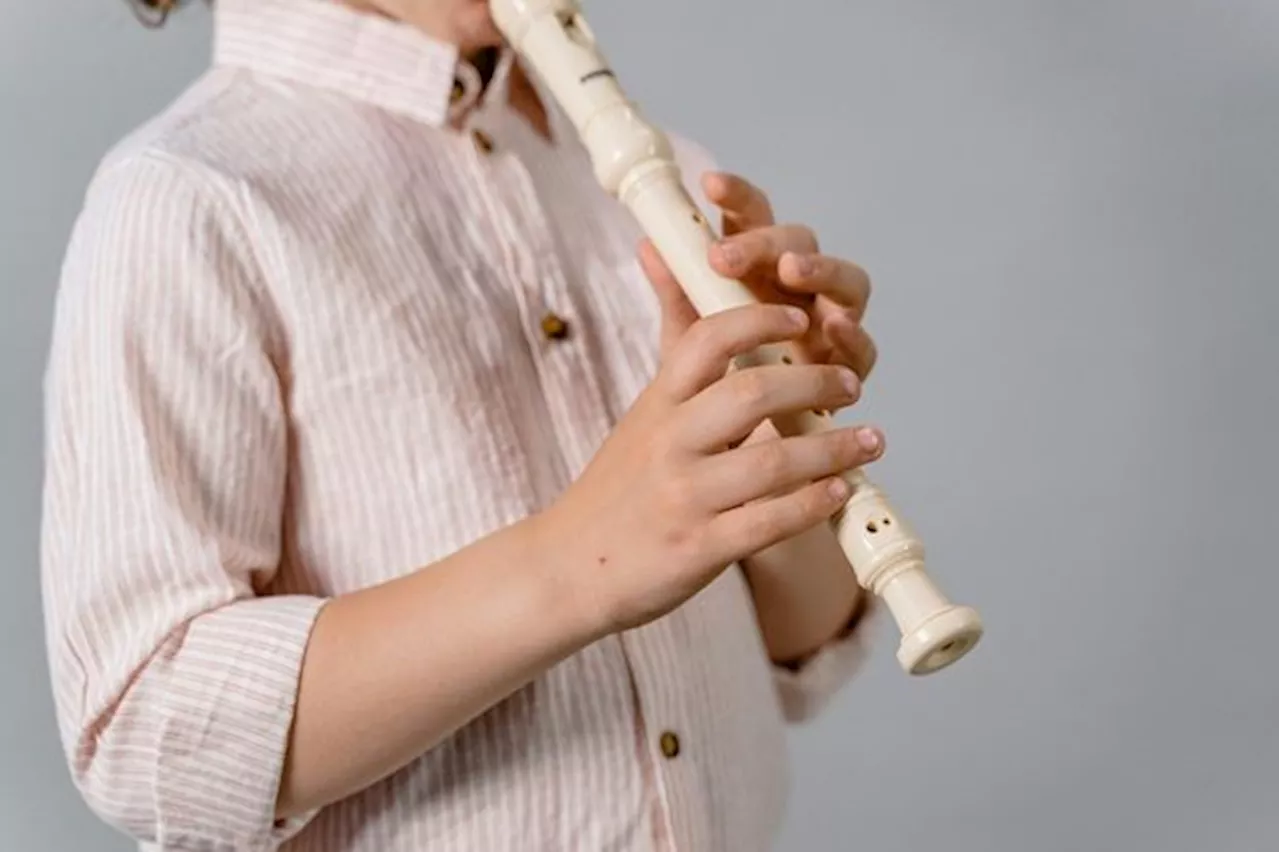This article explores the fascinating history of the recorder, tracing its evolution from a historical instrument to a ubiquitous presence in primary school music classes worldwide. It delves into the factors that contributed to its popularity, highlighting the role of 19th-century musicians, the influence of the Nazi regime, and the contributions of Japanese educators. The article paints a picture of how a simple instrument, once relegated to the margins of music history, became a stepping stone for generations of students to explore the world of music.
RECORDERS, yeah. What are they good for? Absolutely nothing. At least that's what ran through the minds of almost every nine or ten-year-old student – including myself back in the day – being forced to awkwardly blow and finger a cheap plastic musical instrument in school. The recorder was ubiquitous in school music classes, not only in Malaysia but in countries all over the world. Many factors may have attributed to the recorder's widespread use.
However, one key factor brought the recorder from medieval music obscurity to most primary school classrooms in the world.The humble recorder is an antique instrument, likely the precursor to the flute, with its origins tracing back to the 14th century. It enjoyed considerable popularity in classical music throughout the Renaissance and Baroque periods. However, over time, the recorder slowly fell out of favour, with musicians and composers preferring the sound of the transverse flute (the one you play sideways). At the time, there was also a consensus that it was considered ungentlemanly to play an instrument that occupied the mouth. Something about how the instrument was splayed offended the sensibilities at the time. Regardless, by the end of the 1800s, the recorder had largely been relegated to the historical margins of music sheets. Then, a series of events took place to push the recorder into the mouths of almost every school kid. It started with a London violin teacher, Arnold Dolmetsch, in the 19th century. He formed an ensemble with his family to play music for fun using old historic instruments he had collected. One day, his son Carl forgot the historic recorder at a train station – I suspect Carl and I may share similar sentiments about the recorder. Anyway, despite losing the instrument, Arnold had created detailed schematics of the old recorder and began mass-producing the instrument. A German, Peter Harlan, then modified the recorder further, making it easier to perform in C major, which later became known as German-style fingering, the version of the recorder that we know today. The recorder's sound and ease of mass production meant that by the time the Third Reich came into power, the recorder was very popular in Germany. The Nazis recognised the instrument's popularity and incorporated the recorder into formal education in schools to assert their dominance over music and education, aided by the German composer Carl Orff. Orff is best known for his musical score, Carmina Burana, which has been used in nearly every movie trailer.All this culminated at the 1936 Berlin Olympics, where the Nazis showed off by having young children perform with recorders during the celebrations as the world looked on. One of those in the crowd was a Japanese foreign student, Yoshitaka Sakamoto, who liked the idea of the recorder so much that he bought several recorders and brought them back to Japan. Back home, he petitioned the manufacturing of the recorders by Nihon Kangakki Kabushikigaisha - later known as the Yamaha Corporation, yes, that one. The rest, as they say, is history. The recorder continued to gain popularity as the stepping stone for formal musical education in the West and East due to it being cheap and easy to mass produce, as well as being (sorta) easy to learn
Music RECORDER MUSIC HISTORY SCHOOL MUSIC ARNOLD DOLMETSCH NAZI GERMANY CARL ORFF YAMAHA CORPORATION
Malaysia Latest News, Malaysia Headlines
Similar News:You can also read news stories similar to this one that we have collected from other news sources.
 Microwave Ovens: Unexpected Homes for BacteriaA study published in Frontiers in found that microwave ovens, despite the high temperatures they generate, can still harbor various types of bacteria. Over 100 strains of microbes were discovered in 30 microwaves inspected, mostly human-skin bacteria transferred from contact surfaces. These bacteria can potentially cause food poisoning. The research suggests cleaning microwaves thoroughly to prevent bacterial buildup, as uneven heating can create cold spots where bacteria may survive.
Microwave Ovens: Unexpected Homes for BacteriaA study published in Frontiers in found that microwave ovens, despite the high temperatures they generate, can still harbor various types of bacteria. Over 100 strains of microbes were discovered in 30 microwaves inspected, mostly human-skin bacteria transferred from contact surfaces. These bacteria can potentially cause food poisoning. The research suggests cleaning microwaves thoroughly to prevent bacterial buildup, as uneven heating can create cold spots where bacteria may survive.
Read more »
 The Unexpected Truth Behind Your Favorite Fruit: Oranges are Man-MadeExplore the fascinating history of the orange, a fruit that is surprisingly the result of human intervention. Learn how this popular citrus fruit came to be through hybridization and its journey from Southeast Asia to the world.
The Unexpected Truth Behind Your Favorite Fruit: Oranges are Man-MadeExplore the fascinating history of the orange, a fruit that is surprisingly the result of human intervention. Learn how this popular citrus fruit came to be through hybridization and its journey from Southeast Asia to the world.
Read more »
 Meta Explains Unexpected Followings of Trump-Era White House AccountsFacebook and Instagram users were surprised to find themselves following Donald Trump, Melania Trump, and JD Vance's accounts. Meta clarifies that these are the same White House accounts, now managed by the Trump administration. Some users reported difficulties unfollowing the new profiles.
Meta Explains Unexpected Followings of Trump-Era White House AccountsFacebook and Instagram users were surprised to find themselves following Donald Trump, Melania Trump, and JD Vance's accounts. Meta clarifies that these are the same White House accounts, now managed by the Trump administration. Some users reported difficulties unfollowing the new profiles.
Read more »
 Celebrate Lunar New Year with a Culinary Journey at Gordon Ramsay Bar & Grill and Street PizzaExperience the magic of Lunar New Year with unique culinary offerings at Gordon Ramsay Bar & Grill and Gordon Ramsay Street Pizza. Celebrate with friends and family over exquisite dishes and bold Malaysian flavors.
Celebrate Lunar New Year with a Culinary Journey at Gordon Ramsay Bar & Grill and Street PizzaExperience the magic of Lunar New Year with unique culinary offerings at Gordon Ramsay Bar & Grill and Gordon Ramsay Street Pizza. Celebrate with friends and family over exquisite dishes and bold Malaysian flavors.
Read more »
 DCU Canon Explained: A Messy Journey Through the New DC UniverseNavigating the canon within the newly formed DC Universe (DCU) proves to be a tangled web. With James Gunn and Peter Safran at the helm, the line between what's considered canon and what's not is constantly evolving. This article delves into the complexities of the DCU canon, starting with Creature Commandos as the foundation and exploring the status of projects like The Suicide Squad, Peacemaker, and even the Blue Beetle character.
DCU Canon Explained: A Messy Journey Through the New DC UniverseNavigating the canon within the newly formed DC Universe (DCU) proves to be a tangled web. With James Gunn and Peter Safran at the helm, the line between what's considered canon and what's not is constantly evolving. This article delves into the complexities of the DCU canon, starting with Creature Commandos as the foundation and exploring the status of projects like The Suicide Squad, Peacemaker, and even the Blue Beetle character.
Read more »
 All aboard KTMB’s special CNY excursion train for a relaxing journey northKUALA LUMPUR, Jan 21 — Keretapi Tanah Melayu Berhad (KTMB) has introduced a special Chinese New Year ‘Excursion’ Train service, which will operate on Jan 27 and 28, in...
All aboard KTMB’s special CNY excursion train for a relaxing journey northKUALA LUMPUR, Jan 21 — Keretapi Tanah Melayu Berhad (KTMB) has introduced a special Chinese New Year ‘Excursion’ Train service, which will operate on Jan 27 and 28, in...
Read more »
